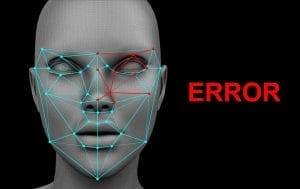by Jason Tarnow | Jun 29, 2022 | Crime, Media, Politics
In May of 2022, the Supreme Court of Canada determined that stacking parole ineligibility for multiple murders is unconstitutional under Canadian law.
In 2011, Stephen Harper’s government passed legislation relating to sentencing provisions in the Criminal Code that would allow Judges to impose parole ineligibility far beyond the minimum of 25 years on the offence of First Degree Murder, pursuant to Section 745.51.
Since that time, several sentences have been passed in imposing parole ineligibility, with the most lengthy sentence being no parole eligibility for 75 years in the case of Douglas Garland, who was found guilty of murdering two adults and their grandson. Garland appealed his sentence to the Alberta Court of Appeal, where it was upheld.
It was the case of the Quebec mosque shooter, Alexandre Bissonnette, that resulted in a unanimous decision from all nine Supreme Court Justices to rule that the sentencing provision violated Section 12 of the Canadian Charter of Rights and Freedoms, granting protection against cruel and unusual punishment. Bissonnette pleaded guilty to 6 counts of First Degree murder and six counts of attempted murder, and the Crown had asked for a parole ineligibility period of 150 years – 25 consecutive years for each of the six people he murdered – which would have been the harshest sentence handed down in Canada since the abolishment of capital punishment. The presiding Judge declined, and instead sentence Bissonnette to 40 years before he could apply for Parole. Criminal defence counsel appealed to the Quebec Court of Appeal in 2020, and the sentence was reduced to 25 years. The Crown then appealed to the Supreme Court of Canada, which led to the landmark decision to cap parole ineligibility at 25 years.

With this decision, those incarcerated under the stacked ineligibility provision are seeking to have their sentences reduced, which has caused a great deal of alarm to the public. It is important to remember that someone convicted of first degree murder will have eligibility at Parole after 25 years – but that does not guarantee their release by any means. The Parole Board looks at many factors when determining whether or not to grant Parole, including the actual offence itself, criminal and social history, rehabilitation efforts, and remorse. Their review of an individuals history when considering release is thorough and rigid. Victim impact statements from family members and loved ones are also taken into consideration.
The decision from the SCC included the following passage:
“This appeal is not about the value of each human life, but rather about the limits of the state’s power to punish offenders.”
This is a reminder that the Court’s decision to limit parole ineligibility is not meant to diminish loss of life, or to favour offenders. It reaffirms that our government, including judicial institutions, must abide by limits to ensure that Canada remains a fair and just society for all.
If you have been charged with a criminal offence in British Columbia (including, but not limited to: Richmond, Vancouver, Surrey, Delta, Langley, Coquitlam, New Westminster, Abbotsford, Victoria, Nanaimo, Kamloops, Kelowna) or the Yukon Territory (including but not limited to: Whitehorse, Dawson City, Watson Lake, Haines Junction, Mayo, Old Crow) contact experienced counsel at Tarnow Criminal Law without delay.
by Jason Tarnow | Oct 2, 2020 | Crime, Legal Rights, Media, Police, Politics, Wheels Of Justice
Whenever incidents relating to terrorism in Canada hit the news, the eyes of Canadians widen with revolt. Recent headlines elicited a similar response, with a healthy dose of confusion and curiosity added to the mix.

On September 21, 2020, criminal charges were announced against 25 year old Ontario resident Shehroze Chaudhry – but not due to allegations of committing acts of terrorism. Rather, Chaudhry has been charged under Section 83.231(1) of the Criminal Code – perpetrating a hoax regarding terrorist activity:
83.231 (1) Every one commits an offence who, without lawful excuse and with intent to cause any person to fear death, bodily harm, substantial damage to property or serious interference with the lawful use or operation of property:
(a) conveys or causes or procures to be conveyed information that, in all the circumstances, is likely to cause a reasonable apprehension that terrorist activity is occurring or will occur, without believing the information to be true; or
(b) commits an act that, in all the circumstances, is likely to cause a reasonable apprehension that terrorist activity is occurring or will occur, without believing that such activity is occurring or will occur.

Chaudhry was a frequent guest on an award winning New York Times podcast known as “Caliphate”. He spoke, in gruesome detail, of his time as an ISIS executioner in Syria, among other things. But the charges levelled against him assert that his personal experiences as an ISIS soldier are fabricated.
While the NYT claimed to have verified his role in ISIS, he gave conflicting accounts to CBC, even going so far as to say he would take a polygraph to prove he had never killed anyone. He likely thought this would absolve him any criminal liability relating to terrorism offences in Canada, but the charges against him refute this misconception.
The details released from the police don’t specify if any other person was harmed or killed due to the alleged yarn by Chaudhry, but they will play a determinative role if he is convicted. The sentences range from a fine and imprisonment in a provincial correctional institution if prosecuted summarily, to life imprisonment should Crown proceed by indictment.
Chaudhry’s case demonstrates that Canadian jurisprudence condemns all activity relating to terrorism – whether it’s the real deal or not.
by Jason Tarnow | Sep 28, 2020 | Crime, Legal Aid, Legal Rights, Media, Politics, Social Media, Wheels Of Justice
Section 2 of the Canadian Charter of Rights and Freedoms grants all Canadians the fundamental right of freedom of expression – but as one young man in Markham, Ontario learned this week, the Charter also permits the enforceme nt of reasonable limits on expression.
nt of reasonable limits on expression.
18 year old Tristan Stronach, a grade 12 student, was charged under section 372(2) of the Criminal Code – making indecent communications – after his instructor had to conclude an online lesson after Stronach allegedly made racist remarks about the black community. The nature of the alleged comments, while not described specifically, has caused some to ask: why isn’t he being charged with a hate crime?
The answer is: because there is no specific “hate crime” offence in the Criminal Code.
Section 372(2) of the Criminal Code reads as follows:
Indecent communications
(2) Everyone commits an offence who, with intent to alarm or annoy a person, makes an indecent communication to that person or to any other person by a means of telecommunication.
“But what about hate speech?”
Section 319(1) of the Criminal Code reads as follows:
Public incitement of hatred
319 (1) Everyone who, by communicating statements in any public place, incites hatred against any identifiable group where such incitement is likely to lead to a breach of the peace is guilty of:
(a) an indictable offence and is liable to imprisonment for a term not exceeding two years; or
(b) an offence punishable on summary conviction.
Wilful promotion of hatred
(2) Everyone who, by communicating statements, other than in private conversation, wilfully promotes hatred against any identifiable group is guilty of
(a) an indictable offence and is liable to imprisonment for a term not exceeding two years; or
(b) an offence punishable on summary conviction.

While it has been made clear that the allegations relate to racist comments towards a single identifiable group – the black community – charges under this section were likely not approved because the evidence is unable to support a conviction. The comments were not made in a “public” place, and while they were made in the virtual presence of a group of individuals, they did not promote hatred – i.e., the comments weren’t made in such a way that they would result in other individuals following suit and creating a breach of the peace as a result.
Notwithstanding the above, if the accused is convicted of making indecent communications, the court will consider to what degree bias, prejudice, or hate played a role. These are aggravating factors that could result in a harsher sentence. Through this legislative structure, these aggravating factors can be considered for a variety of offences – assault, theft, murder, and so on.
As Canadians, we are very fortunate to live in a country that allows us to speak, move, and exist freely – but cases like this are a reminder that equality reigns supreme.
by Jason Tarnow | Jul 2, 2020 | Crime, Criminal Attorney, Legal Rights, Media, Police, Riots, Social Media, Wheels Of Justice
Over the last couple of months, there has been outcry from the public urging the use of BWC’s (Body Worn Cameras) for Canadian law enforcement. Although initially in response to the growing unrest relating to police brutality in the United States, there are echoes of abandoned intentions from Canadian officials dating back at least a few years.
Back in 2015, the Office of the Privacy Commissioner of Canada (“OPCC”) issued a publication regarding the use of BWC by police, in collaboration with privacy agencies in Alberta, New Brunswick and Quebec. The remaining Canadian law enforcement agencies from other provinces and territories acted “in consultation”.
For reference: according to the CBC, there were a total of 2 incidents involving the death of individuals at the hands of law enforcement in New Brunswick between 2012 and 2014, 12 incidents in Quebec, and 14 incidents in Alberta. Interestingly enough, British Columbia (on par with Quebec at 14 deaths) and Ontario (with the highest rate of police violence resulting in death in the country at 25 deaths between 2012 and 2014) were only acting in consultation.
The report hails the effectiveness of BWC to capture high quality images, videos, and audio recordings – so effective, in fact, that the OPCC had grave concerns regarding their ability to capture material that could jeopardize the privacy of innocent and uninvolved bystanders.

The report goes on to tout the value of BWC for evidentiary purposes, including analytics so sophisticated that the material obtained would likely be suitable for biometric comparison – aka, facial recognition.
There is no arguing the fact that the use of BWC by police has implications for the privacy of citizens in their everyday lives – especially since once fitted, citizens would likely expect on-duty officers to have their devices on a continuous basis as opposed to intermittently.
Benefits of BWC include the ability to review interactions between police and the public, recording communications between the police and suspects in the course of an investigation, identifying potential witnesses, and of course recording interactions between police officers. Many criminal cases involve evidence obtained through the use of dash cams, which provide audio from inside a police cruiser and video from the perspective of the driver. The effectiveness of this technology loses value when the investigation takes place outside of a police vehicle, as the audio often fails to capture intelligible communications between police and a suspect, or between officers themselves. Although the dash cam is kept running, the audio portion is often useless when the interactions between police and a suspect take place outside the vehicle, and the windows of the police cruiser are closed, or if the police/suspect leave the immediate area where the audio is successfully captured.
The report indicates that while continuous recording would undoubtedly provide a greater level of accountability for the actions of police, the threat to personal privacy reigns supreme:
“From an accountability perspective, continuous recording may be preferable because it captures an unedited recording of an officer’s actions and the officer cannot be accused of manipulating recordings for his or her own benefit. However, from a privacy perspective, collecting less or no personal information is always the preferred option”
In 2014, the Edmonton Police concluded a pilot project regarding the use of BWC by its officers. The conclusion?:
“The cameras had no effect on police use-of-force incidents and said there was no statistical difference in resolving police complaints”
According to an analysis done by CBC, there were a total of four deaths between 2012 and 2014 relating to officers of the Edmonton Police Service. By comparison, there were 9 deaths in the same period relating to officers of the Toronto Police Service. The results of the Pilot Project may have seen different results in a different jurisdiction.
The Edmonton Police explained that in addition to being ineffective to expose cases of police misconduct, the related expenses were simply unrealistic. Perhaps surprisingly, it’s not the cost of the devices themselves, but the expense to store and manage all of the material collected: somewhere between 6 and 15 million dollars over five years, which also includes hiring personnel qualified for the job.
Finding the balance between accountability, transparency and oversight of police against the protection of privacy for Canadian citizens is a legitimate and profound task – one that cannot be taken lightly. As the calls for BWC in Canadian law enforcement grow louder, and as Canadians revisit the reality of what it is to be privileged in this country, we can only hope that the values of dignity and equality are recognized as being more valuable than the cost of the equipment that very well could save lives.
by Jason Tarnow | Feb 11, 2020 | Crime, Criminal Attorney, Media, Police, Riots, Social Media, Wheels Of Justice
“Not only is this a concern with the possibility of misidentifying someone and leading to wrongful convictions, it can also be very damaging to our society by being abused by law enforcement for things like constant surveillance of the public”
– Nicole Martin, Forbes contributor

Star Trek. Back to the Future. District 9. I, Robot. These are only a few examples of films that have relied on biometrics – more commonly referred to as Facial Recognition – as a theme for entertainment. All are fiction based and while you may have thought of biometrics as a tool used by elusive government agencies like the FBI and CIA, that isn’t the case at all. Advancements in biometric technology have been seized upon by various law enforcement and government agencies across Canada – creating serious concerns from privacy and civil liberty advocates, and of course, criminal defence counsel.
The Calgary Police Service began using Facial Recognition technology in 2014. The system they use, known as NeoFace Reveal, works by analyzing an uploaded image and translating it into a mathematical pattern known as an algorithm. The image is then logged in a database and used for comparison against other uploaded images.
The Toronto Police Service hopped on board too. They reported uploading 800,000 images into their Repository for Integrated Criminalistic Imaging, or RICI by 2018. Their use of biometrics began with a trial in 2014, and in 2018, the Service purchased a system at a cost of about $450,000. Between March and December of 2018, the Toronto Police Service ran 1,516 searches, with about 910 of those searches (or 60%) resulting in a potential match. Of those potential matches, approximately 728 people were identified (about 80%). There were no statistics provided in relation to ethnicity, age, or gender, however, research has raised concerns about disproportionate effects of biometrics as it relates to people of color.
Manitoba Police do not currently use biometric technology as an investigative tool, although the idea was floated around in 2019 after the commission of a report concerning growing crime rates in Winnipeg’s downtown core. The Provincial government in Manitoba went so far as to suggest that this technology could be used to identify violent behavior – which sounds a lot like active surveillance, an unethical use of biometrics, which demonstrates one of the most profound concerns surrounding use of this technology. And while it is only a matter of time until the Manitoba Police do use this technology, many retailers in the province are already using it.
At home here in British Columbia, the Vancouver Police Department denies using Facial Recognition technology as a mechanism to investigate crime – in fact, back in 2011, they turned down ICBC’s offer to assist in identifying suspects involved in the Vancouver Stanley Cup Riots with the aid of their software. The office of the BC Privacy Commissioner confirmed that any use of ICBC’s facial recognition data by the VPD would amount to a breach of privacy for its customers.The office of the Privacy Commissioner of Canada has been keeping track since at least 2013 – yet, there is little regulation of the use of biometrics in public and private sectors.
The same cannot be said for the RCMP in British Columbia, who, as recently as two weeks ago refused to confirm or deny use of biometrics as an investigative tool, but questions have been raised as to whether or not the RCMP is a client of Clearview AI, a facial recognition startup pioneered by US citizen Hoan Ton-That. Clearview’s work has not gone unnoticed – Facebook and Twitter have issued cease and desist letters, making it very clear that they do not support Clearview’s objectives. Google issued a cease and desist letter as well – however, their position on biometrics is fuzzy – especially since they are trying to make advancements in this area as well. So far, though, they have come under fire for their tactics and the results that have been generated.
The Canadian Government’s position on the use of biometrics is established on their website. When you submit your biometric information at Service Canada (for example), your information isn’t actually stored there, rather, it is sent to the Canadian Immigration Biometric Identification System, where it will remain for a period of 10 years. Further, your biometrics information will be shared with the United States, Australia, New Zealand and the United Kingdom. And yes – you can refuse to provide this information – but it will likely put a kink in your travel plans.

One important factor to consider about all of these agencies and their use of biometric technology is that this tool was never intended for use as active surveillance, or a method to intervene in incidents of crime in real-time. Whether it is a violent assault, sexual assault, theft under or over $5,000, murder or kidnapping, biometrics is an “after the fact” investigative mechanism. If used ethically and within parameters that preserve the privacy of all citizens 100% of the time, perhaps there would be no need for alarm – but that is incredibly unlikely. As more agencies begin to use this technology, the lack of regulatory oversight is bound to create an enormous pervasion of your privacy – and you may never know about it.




 nt of reasonable limits on expression.
nt of reasonable limits on expression.


